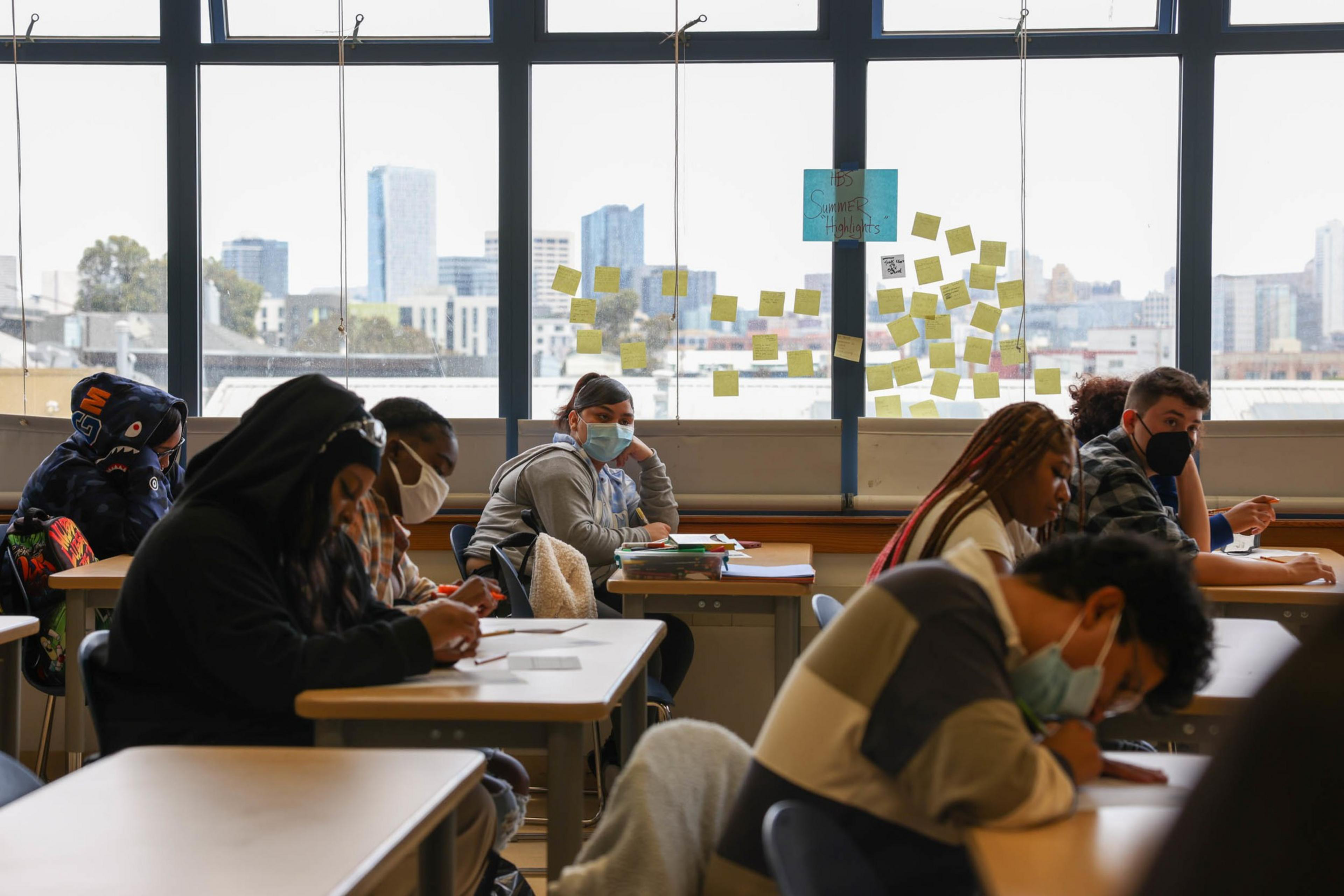About 50,000 students — from transitional kindergarten to high school — will return to classrooms in the San Francisco Unified School District on Monday. Today, enrolled students learn their classroom assignments.
The school year begins against a backdrop of budget cuts, teacher shortages, and lingering questions about possible school closures that have rolled over from last year. The Standard spoke with district officials, educators, and parent leaders to answer some of the most pressing questions parents have about changes at the start of the school year.
Are there enough teachers in classrooms?
After letting go hundreds of educators last year, SFUSD faces concerns about staffing every classroom.
Officials shared Monday morning that the district has filled 93.5% of general and special education classroom teaching positions, reaching its goal of 92% staffing (opens in new tab) — the threshold that allows parents to pay to hire more teachers. The teachers union noted that approximately 90 classroom teaching positions remain unfilled, and many new hires are still being onboarded, so the vacancy numbers may not yet reflect the full picture.

Meanwhile, contract negotiations between the district and the teachers union continue, with educators seeking raises, while the district works to cut tens of millions from its budget.
Last-minute school assignment changes
Parents unhappy with their kids’ school assignment results and who are on waitlists may still have a chance to switch. Meredith Dodson, founder of SF Parent Coalition, noted that there is often “a lot of movement within the first two weeks” and urged families to be patient.
Typically, the district contacts parents on waitlists if spots open after the school year begins.
Dodson encourages parents to stay open-minded if they did not get their preferred school.
“Sometimes parents don’t get their top choice, but it turns out their kids have a wonderful experience at the school they’re assigned,” she said.
Curriculum updates
Two major curriculum changes are rolling out this year.
The district has adopted a new version (opens in new tab) of the high school ethnic studies curriculum following backlash over the previous one, which critics considered biased and politicized.
Additionally, a new math curriculum (opens in new tab) is being introduced for K-8. The classes will integrate digital tools with print materials, focusing on “deep conceptual understanding” and “problem-based learning.”
The district has paused its controversial “grading for equity” policy, which faced criticism from some parents who believed it lowered academic standards.
Better meals
Higher-quality food, in greater variety, may be coming soon, thanks to last year’s voter-approved bond to build a central SFUSD kitchen and prepare fresher meals (opens in new tab). All students will continue to receive free meals this year.
Student Nutrition Services is working to expand culturally relevant recipes, offer more milk options, and, according to the district, create “a more inclusive and welcoming dining experience.”

The district will also provide additional training for dining staff to ensure equity in the serving line — making sure students are treated fairly and respectfully when getting meals, regardless of race, income, language, disability, or other factors. SFUSD said this change does not come as a response to any complaints but is a new best practice.
Possible school closures
Last year, after a plan by former Superintendent Matt Wayne to close 13 schools sparked outrage, new Superintendent Maria Su said there would be no closures. However, the problem the proposed closures were designed to address — declining enrollment — continues. For now, Su appears focused on “repurposing” campuses rather than closing them outright.
Su said in June that the district would spend the next year reviewing all facilities to determine which could be converted into transitional kindergarten classrooms or used to expand special education services.
“At the end of the day, we will determine which [schools] we have to close or merge,” Su told the Standard. “We will determine that, but at a later time.”
More resources for parents
SF Parent Coalition has released a guide (opens in new tab) to help families get ready for the school year. It outlines key steps before the first day, including signing up for the online communication portal ParentVUE, submitting required health forms, and arranging before- or after-school care. It also provides orientation tips, drop-off advice, and a checklist for what students should bring on their first day, as well as information for those needing special education services.
